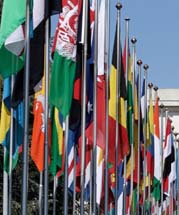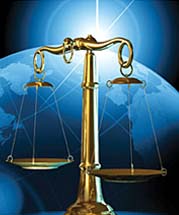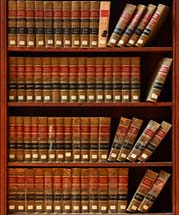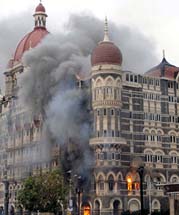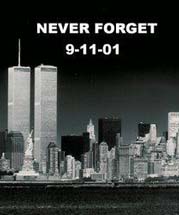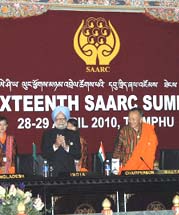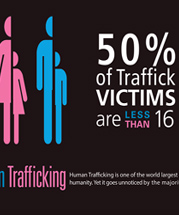History
Asia
Ancient China
One of the earliest realists in international relations theory was
the 6th century BC military strategist Sun Tzu (d. 496 BC), author
of The Art of War. He lived during a time in which rival
states were starting to pay less attention to traditional respects
of tutelage to the Zhou Dynasty (c. 1050–256 BC) figurehead monarchs
while each vied for power and total conquest. However, a great deal
of diplomacy in establishing allies, bartering land, and signing
peace treaties was necessary for each warring state, and the
idealized role of the "persuader/diplomat" developed.
From the Battle of Baideng (200 BC) to the Battle of Mayi (133 BC),
the Han Dynasty was forced to uphold a marriage alliance and pay an
exorbitant amount of tribute (in silk, cloth, grain, and other
foodstuffs) to the powerful northern nomadic Xiongnu that had been
consolidated by Modu Shanyu. After the Xiongnu sent word to Emperor
Wen of Han (r. 180–157) that they controlled areas stretching from
Manchuria to the Tarim Basin oasis city-states, a treaty was drafted
in 162 BC proclaiming that everything north of the Great Wall belong
to nomads' lands, while everything south of it would be reserved for
Han Chinese. The treaty was renewed no less than nine times, but did
not restrain some Xiongnu tuqi from raiding Han borders. That
was until the far-flung campaigns of Emperor Wu of Han (r. 141–87
BC) which shattered the unity of the Xiongnu and allowed Han to
conquer the Western Regions; under Wu, in 104 BC the Han armies
ventured as far Fergana in Central Asia to battle the Yuezhi who had
conquered Hellenistic Greek areas.

Portraits of Periodical Offering, a
6th-century Chinese painting portraying various emissaries;
ambassadors depicted in the painting ranging from those of
Hephthalites,
Persia
to
Langkasuka,
Baekje(part
of the modern Korea), Qiuci, and Wo
(Japan).
The Koreans and Japanese during the Chinese Tang Dynasty (618–907
AD) looked to the Chinese capital of Chang'an as the hub of
civilization and emulated its central bureaucracy as the model of
governance. The Japanese sent frequent embassies to China in this
period, although they halted these trips in 894 when the Tang seemed
on the brink of collapse. After the devastating An Shi Rebellion
from 755 to 763, the Tang Dynasty was in no position to reconquer
Central Asia and the Tarim Basin. After several conflicts with the
Tibetan Empire spanning several different decades, the Tang finally
made a truce and signed a peace treaty with them in 841.
In the 11th century during the Song Dynasty (960–1279), there were
cunning ambassadors such as Shen Kuo and Su Song who achieved
diplomatic success with the Liao Dynasty, the often hostile Khitan
neighbor to the north. Both diplomats secured the rightful borders
of the Song Dynasty through knowledge of cartography and dredging up
old court archives. There was also a triad of warfare and diplomacy
between these two states and the Tangut Western Xia Dynasty to the
northwest of Song China (centered in modern-day Shaanxi). After
warring with the Lý Dynasty of Vietnam from 1075 to 1077, Song and
Lý made a peace agreement in 1082 to exchange the respective lands
they had captured from each other during the war.
Long before the Tang and Song dynasties, the Chinese had sent envoys
into Central Asia, India, and Persia, starting with Zhang Qian in
the 2nd century BC. Another notable event in Chinese diplomacy was
the Chinese embassy mission of Zhou Daguan to the Khmer Empire of
Cambodia in the 13th century. Chinese diplomacy was a necessity in
the distinctive period of Chinese exploration. Since the Tang
Dynasty (618–907 AD), the Chinese also became heavily invested in
sending diplomatic envoys abroad on maritime missions into the
Indian Ocean, to India, Persia, Arabia, East Africa, and Egypt.
Chinese maritime activity was increased dramatically during the
commercialized period of the Song Dynasty, with new nautical
technologies, many more private ship owners, and an increasing
amount of economic investors in overseas ventures.
During the Mongol Empire (1206–1294) the Mongols created something
similar to today's diplomatic passport called paiza. The paiza were
in three different types (golden, silver, and copper) depending on
the envoy's level of importance. With the paiza, there came
authority that the envoy can ask for food, transport, place to stay
from any city, village, or clan within the empire with no
difficulties.
From the 17th century the Qing Dynasty concluded a series of
treaties with Czarist Russia, beginning with the Treaty of Nerchinsk
in the year 1689. This was followed up by the Aigun Treaty and the
Convention of Peking in the mid-19th century.
As European power spread around the world in the 18th and 19th
centuries so too did its diplomatic model, and Asian countries
adopted European diplomatic systems.
.
Ancient India

Rama and Lakshmana Receive Envoys,
Page from a Dispersed Ramayana Series, ca. 1634.
Ancient India, with its kingdoms and dynasties, had a long tradition
of diplomacy. The oldest treatise on statecraft and diplomacy,
Arthashastra, is attributed to Kautilya (also known as
Chanakya), who was the principal adviser to Chandragupta Maurya, the
founder of the Maurya dynasty who ruled in the 3rd century BC,
(whose capital was Patliputra, today's Patna, the chief city of
Bihar state). Arthashastra is a complete work on the art of
kingship, with long chapters on taxation and on the raising and
maintenance of armies. It also incorporates a theory of diplomacy,
of how in a situation of mutually contesting kingdoms, the wise king
build alliances and tries to checkmate his adversaries. The envoys
sent at the time to the courts of other kingdoms tended to reside
for extended periods of time, and Arthashastra contains
advice on the deportment of the envoy, including the trenchant
suggestion that 'he should sleep alone'. The highest morality for
the king is that his kingdom should prosper. It is also good to note
that Lord Krishna, in the epic Mahabharata, acted as a divine
diplomat and statesman between the Kuru and Pandava dynasties.
Modern Asia

Diplomatic Personnel
Diplomatic Personnel
Diplomatic relations within the Early Modern era of Asia were
depicted as an environment of prestige and Status. It was maintained
that one must be of noble ancestry in order to represent an
autonomous state within the international arena. Therefore the
position of diplomat was often revered as an element of the elitist
class within Asia. A state's ability to practice diplomacy has been
one of the underlying defining characteristics of an autonomous
state. It is this practice that has been employed since the
conception of the first city-states within the international
spectrum. Diplomats in Asia were originally sent only for the
purpose of negotiation. They would be required to immediately return
after their task was completed. The majority of diplomats initially
constituted the relatives of the ruling family. A high rank was
bestowed upon them in order to present a sense of legitimacy with
regards to their presence. Italy, the Ottoman Empire, and China were
the first real states that perpetuated environments of diplomacy.
During the early modern era diplomacy evolved to become a crucial
element of international relations within the Mediterranean and
Asia.
Europe
Ancient roots
The ability to practice diplomacy is one of the defining elements of
a state, diplomacy has been practiced since the inception of
civilization. In Europe, diplomacy begins with the first city-states
formed in ancient Greece. Diplomats were sent only for specific
negotiations, and would return immediately after their mission
concluded. Diplomats were usually relatives of the ruling family or
of very high rank in order to give them legitimacy when they sought
to negotiate with the other state.
The origins of diplomacy are in the strategic and competitive
exchange of impressive gifts, which may be traced to the Bronze Age
and recognized as an aspect of Homeric guest-friendship. Thus
diplomacy and trade have been inexorably linked from the outset. "In
the framework of diplomatic relations it was customary for Byzantine
emperors and Muslim rulers, especially the 'Abbāsids and the
Fātimids, as well as for Muslim rulers between themselves, to
exchange precious gifts, with which they attempted to impress or
surpass their counterparts," remarks David Jacoby, in the context of
the economics of silk in cultural exchange among Byzantium, Islam
and the Latin West: merchants accompanied emissaries, who often
traveled on commercial ships. At a later date, it will be recalled
that the English adventurer and trader Anthony Sherley convinced the
Persian ruler to send the first Persian embassy to Europe
(1599–1602).
Ancient Greece
The Greek City States on some occasions sent envoys to each other in
order to negotiate specific issues, such as war and peace or
commercial relations, but did not have diplomatic representatives
regularly posted in each other's territory. However, some of the
functions given to modern diplomatic representatives were in
Classical Greece filled by a proxenos, who was a citizen of the host
city having a particular relations of friendship with another city –
a relationship often hereditary in a particular family.
Ancient Rome
Modern Europe
In Europe, early modern diplomacy's origins are often traced to the
states of Northern Italy in the early Renaissance, with the first
embassies being established in the 13th century. Milan played a
leading role, especially under Francesco Sforza who established
permanent embassies to the other city states of Northern Italy.
Tuscany and Venice were also flourishing centres of diplomacy from
the 14th century onwards. It was in the Italian Peninsula that many
of the traditions of modern diplomacy began, such as the
presentation of an ambassador's credentials to the head of state.
From Italy the practice was spread to other European regions. Milan
was the first to send a representative to the court of France in
1455. However, Milan refused to host French representatives fearing
espionage and that the French representatives would intervene in its
internal affairs. As foreign powers such as France and Spain became
increasingly involved in Italian politics the need to accept
emissaries was recognized. Soon the major European powers were
exchanging representatives. Spain was the first to send a permanent
representative; it appointed an ambassador to the Court of England
in 1487. By the late 16th century, permanent missions became
customary. The Holy Roman Emperor, however, did not regularly send
permanent legates, as they could not represent the interests of all
the German princes (who were in theory all subordinate to the
Emperor, but in practice each independent).
During that period the rules of modern diplomacy were further
developed. The top rank of representatives was an ambassador. At
that time an ambassador was a nobleman, the rank of the noble
assigned varying with the prestige of the country he was delegated
to. Strict standards developed for ambassadors, requiring they have
large residences, host lavish parties, and play an important role in
the court life of their host nation. In Rome, the most prized
posting for a Catholic ambassador, the French and Spanish
representatives would have a retinue of up to a hundred. Even in
smaller posts, ambassadors were very expensive. Smaller states would
send and receive envoys, who were a rung below ambassador. Somewhere
between the two was the position of minister plenipotentiary.
Diplomacy was a complex affair, even more so than now. The
ambassadors from each state were ranked by complex levels of
precedence that were much disputed. States were normally ranked by
the title of the sovereign; for Catholic nations the emissary from
the Vatican was paramount, then those from the kingdoms, then those
from duchies and principalities. Representatives from republics were
ranked the lowest (which often angered the leaders of the numerous
German, Scandinavian and Italian republics). Determining precedence
between two kingdoms depended on a number of factors that often
fluctuated, leading to near-constant squabbling
.

French Diplomat
Charles Maurice de
Talleyrand-Périgord
is considered one of the most skilled diplomats of all time.
Ambassadors, nobles with little foreign experience and no
expectation of a career in diplomacy, needed to be supported by
large embassy staff. These professionals would be sent on longer
assignments and would be far more knowledgeable than the
higher-ranking officials about the host country. Embassy staff would
include a wide range of employees, including some dedicated to
espionage. The need for skilled individuals to staff embassies was
met by the graduates of universities, and this led to a great
increase in the study of international law, modern languages, and
history at universities throughout Europe.
At the same time, permanent foreign ministries began to be
established in almost all European states to coordinate embassies
and their staffs. These ministries were still far from their modern
form, and many of them had extraneous internal responsibilities.
Britain had two departments with frequently overlapping powers until
1782. They were also far smaller than they are currently. France,
which boasted the largest foreign affairs department, had only some
70 full-time employees in the 1780s.
The elements of modern diplomacy slowly spread to Eastern Europe and
Russia, arriving by the early 18th century. The entire edifice would
be greatly disrupted by the French Revolution and the subsequent
years of warfare. The revolution would see commoners take over the
diplomacy of the French state, and of those conquered by
revolutionary armies. Ranks of precedence were abolished. Napoleon
also refused to acknowledge diplomatic immunity, imprisoning several
British diplomats accused of scheming against France.
After the fall of Napoleon, the Congress of Vienna of 1815
established an international system of diplomatic rank. Disputes on
precedence among nations (and therefore the appropriate diplomatic
ranks used) were first addressed at the Congress of Aix-la-Chapelle
in 1818, but persisted for over a century until after World War II,
when the rank of ambassador became the norm. In between that time,
figures such as the German Chancellor Otto von Bismarck were
renowned for international diplomacy.
Middle East
Ancient Egypt, Canaan, and Hittite Empire
Some of the earliest known diplomatic records are the Amarna letters
written between the pharaohs of the Eighteenth dynasty of Egypt and
the Amurru rulers of Canaan during the 14th century BC. Following
the Battle of Kadesh in c. 1274 BC during the Nineteenth
dynasty, the pharaoh of Egypt and ruler of the Hittite Empire
created one of the first known international peace treaties which
survives in stone tablet fragments.
Ottoman Empire
Relations with the government of the Ottoman Empire (known to
Italian states as the Sublime Porte) were particularly important to
Italian states. The maritime republics of Genoa and Venice depended
less and less upon their nautical capabilities, and more and more
upon the perpetuation of good relations with the Ottomans.
Interactions between various merchants, diplomats, and religious men
between the Italian and Ottoman empires helped inaugurate and create
new forms of diplomacy and statecraft. Eventually the primary
purpose of a diplomat, which was originally a negotiator, evolved
into a persona that represented an autonomous state in all aspects
of political affairs. It became evident that all other sovereigns
felt the need to accommodate themselves diplomatically, due to the
emergence of the powerful political environment of the Ottoman
Empire
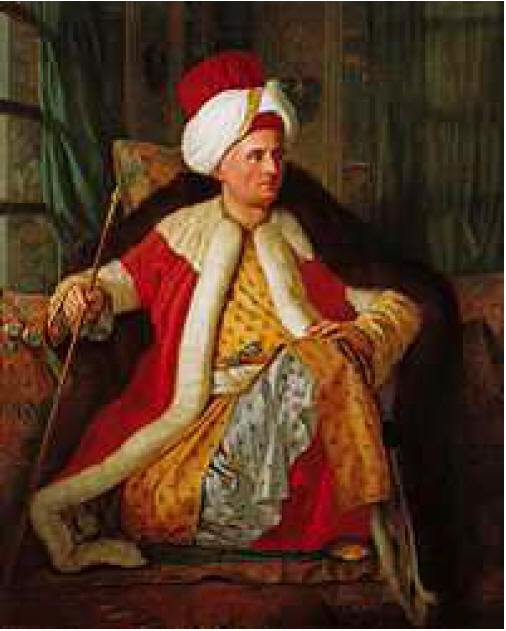
A French Ambassador in Ottoman dress,
painted by Antoine de Favray, 1766, Pera Museum, Istanbul.
One could come to the conclusion that the atmosphere of diplomacy
within the early modern period revolved around a foundation of
conformity to Ottoman culture.
Diplomatic immunity
The sanctity of diplomats has long been observed. This sanctity has
come to be known as diplomatic immunity. While there have been a
number of cases where diplomats have been killed, this is normally
viewed as a great breach of honour. Genghis Khan and the Mongols
were well known for strongly insisting on the rights of diplomats,
and they would often wreak horrific vengeance against any state that
violated these rights.
Diplomatic rights were established in the mid-17th century in Europe
and have spread throughout the world. These rights were formalized
by the 1961 Vienna Convention on Diplomatic Relations, which
protects diplomats from being persecuted or prosecuted while on a
diplomatic mission. If a diplomat does commit a serious crime while
in a host country he may be declared as persona non grata (unwanted
person). Such diplomats are then often tried for the crime in their
homeland.
Diplomatic communications are also viewed as sacrosanct, and
diplomats have long been allowed to carry documents across borders
without being searched. The mechanism for this is the so-called
"diplomatic bag" (or, in some countries, the "diplomatic pouch").
While radio and digital communication have become more standard for
embassies, diplomatic pouches are still quite common and some
countries, including the United States, declare entire shipping
containers as diplomatic pouches to bring sensitive material (often
building supplies) into a country.
In times of hostility, diplomats are often withdrawn for reasons of
personal safety, as well as in some cases when the host country is
friendly but there is a perceived threat from internal dissidents.
Ambassadors and other diplomats are sometimes recalled temporarily
by their home countries as a way to express displeasure with the
host country. In both cases, lower-level employees still remain to
actually do the business of diplomacy.
Espionage
Diplomacy is closely linked to espionage or gathering of
intelligence. Embassies are bases for both diplomats and spies, and
some diplomats are essentially openly acknowledged spies. For
instance, the job of military attachés includes learning as much as
possible about the military of the nation to which they are
assigned. They do not try to hide this role and, as such, are only
invited to events allowed by their hosts, such as military parades
or air shows. There are also deep-cover spies operating in many
embassies. These individuals are given fake positions at the
embassy, but their main task is to illegally gather intelligence,
usually by coordinating spy rings of locals or other spies. For the
most part, spies operating out of embassies gather little
intelligence themselves and their identities tend to be known by the
opposition. If discovered, these diplomats can be expelled from an
embassy, but for the most part counter-intelligence agencies prefer
to keep these agents in situ and under close monitoring.
The information gathered by spies plays an increasingly important
role in diplomacy. Arms-control treaties would be impossible without
the power of reconnaissance satellites and agents to monitor
compliance. Information gleaned from espionage is useful in almost
all forms of diplomacy, everything from trade agreements to border
disputes.
Diplomatic resolution of problems
Various processes and procedures have evolved over time for handling
diplomatic issues and disputes.
Arbitration and mediations
Nations sometimes resort to international arbitration when faced
with a specific question or point of contention in need of
resolution. For most of history, there were no official or formal
procedures for such proceedings. They were generally accepted to
abide by general principles and protocols related to international
law and justice.
Sometimes these took the form of formal arbitrations and mediations.
In such cases a commission of diplomats might be convened to hear
all sides of an issue, and to come some sort of ruling based on
international law.
In the modern era, much of this work is often carried out by the
International Court of Justice at The Hague, or other formal
commissions, agencies and tribunals, working under the United
Nations. Below are some examples.
·
Hay-Herbert Treaty Enacted after the
United States and Britain submitted a dispute to international
mediation about the US-Canadian border.
Conferences
Other times, resolutions were sought through the convening of
international conferences. In such cases, there are fewer ground
rules, and fewer formal applications of international law. However,
participants are expected to guide themselves through principles of
international fairness, logic, and protocol.
Some examples of these formal conferences are:
·
Congress of Vienna (1815) – After
Napoleon was defeated, there were many
diplomatic questions waiting to be resolved. This included the shape
of the map of Europe, the
disposition of political and nationalist
claims of various ethnic groups and nationalities wishing to have
some political autonomy, and the resolution of various claims by
various European powers.
·
The
Congress of Berlin (June 13 – July 13,
1878) was a meeting of the European Great Powers' and the Ottoman
Empire's leading statesmen in Berlin in 1878. In the wake of the
Russo-Turkish War, 1877–78, the
meeting's aim was to reorganize conditions in the Balkans.
Negotiations
Sometimes nations convene official negotiation processes to settle a
specific dispute or specific issue between several nations which are
parties to a dispute. These are similar to the conferences mentioned
above, as there are technically no established rules or procedures.
However, there are general principles and precedents which help
define a course for such proceedings.
Some examples are
·
Camp David accord Convened in 1978 by
President Jimmy Carter of the United States, at Camp David to reach
an agreement between Prime Minister Mechaem Begin of Israel and
President Anwar Sadat of Egypt. After weeks of negotiation,
agreement was reached and the accords were signed, later leading
directly to the Israel-Egypt Peace Treaty
of 1979.
·
Treaty of Portsmouth Enacted after
President Theodore Roosevelt
brought together the delegates from Russia
and Japan, to settle the
Russo-Japanese War. Roosevelt's personal
intervention settled the conflict, and caused him to win the
Nobel peace prize.
Diplomatic recognition
Diplomatic recognition is an important factor in determining whether
a nation is an independent state. Receiving recognition is often
difficult, even for countries which are fully sovereign. For many
decades after its becoming independent, even many of the closest
allies of the Dutch Republic refused to grant it full recognition.
Today there are a number of independent entities without widespread
diplomatic recognition, most notably the Republic of China
(ROC)/Taiwan on Taiwan Island. Since the 1970s, most nations have
stopped officially recognizing the ROC's existence on Taiwan, at the
insistence of the People's Republic of China (PRC). Currently, the
United States and other nations maintain informal relations through
de facto embassies, with names such as the American Institute
in Taiwan. Similarly, Taiwan's de facto embassies abroad are known
by names such as the Taipei Economic and Cultural Representative
Office. This was not always the case, with the US maintaining
official diplomatic ties with the ROC, recognizing it as the sole
and legitimate government of "all of China" until 1979, when these
relations were broken off as a condition for establishing official
relations with PR China.
The Palestinian National Authority has its own diplomatic service,
however Palestinian representatives in most Western countries are
not accorded diplomatic immunity, and their missions are referred to
as Delegations General.
Other unrecognized regions which claim independence include
Abkhazia, Transnistria, Somaliland, South Ossetia, Nagorno Karabakh,
and the Turkish Republic of Northern Cyprus. Lacking the economic
and political importance of Taiwan, these nations tend to be much
more diplomatically isolated.
Though used as a factor in judging sovereignty, Article 3 of the
Montevideo Convention states, "The political existence of the state
is independent of recognition by other states."
Informal diplomacy
Informal diplomacy (sometimes called Track II diplomacy) has been
used for centuries to communicate between powers. Most diplomats
work to recruit figures in other nations who might be able to give
informal access to a country's leadership. In some situations, such
as between the United States and the People's Republic of China a
large amount of diplomacy is done through semi-formal channels using
interlocutors such as academic members of thinktanks. This occurs in
situations where governments wish to express intentions or to
suggest methods of resolving a diplomatic situation, but do not wish
to express a formal position.
Track II diplomacy is a specific kind of informal diplomacy, in
which non-officials (academic scholars, retired civil and military
officials, public figures, social activists) engage in dialogue,
with the aim of conflict resolution, or confidence-building.
Sometimes governments may fund such Track II exchanges. Sometimes
the exchanges may have no connection at all with governments, or may
even act in defiance of governments; such exchanges are called Track
III.
On some occasion a former holder of an official position continues
to carry out an informal diplomatic activity after retirement. In
some cases, governments welcome such activity, for example as a
means of establishing an initial contact with a hostile state of
group without being formally committed. In other cases, however,
such informal diplomats seek to promote a political agenda different
from that of the government currently in power. Such informal
diplomacy is practiced by former US Presidents Jimmy Carter and (to
a lesser extent) Bill Clinton and by the former Israeli diplomat and
minister Yossi Beilin.
Small state diplomacy
Small State Diplomacy is receiving increasing attention in
diplomatic studies and international relations. Small states are
particularly affected by developments which are determined beyond
their borders such as climate change, water security and shifts in
the global economy. Diplomacy is the main vehicle by which small
states are able to ensure that their goals are addressed in the
global arena. These factors mean that small states have strong
incentives to support international cooperation. But with limited
resources at their disposal, conducting effective diplomacy poses
unique challenges for small states.
Types
There are a variety of diplomatic categories and diplomatic
strategies employed by organizations and governments to achieve
their aims, each with its own advantages and disadvantages.
Appeasement
Appeasement
is a policy of making concessions to an aggressor in order to avoid
confrontation.
Soft power
Soft power,
sometimes called hearts and minds diplomacy, as defined by
Joseph Nye, is the cultivation of relationships, respect, or even
admiration from others in order to gain influence, as opposed to
more coercive approaches.
Monetary diplomacy
Monetary diplomacy
is the use of foreign aid or other types of monetary policy as a
means to achieve a diplomatic agenda.
Gunboat diplomacy
Gunboat diplomacy
is the use of conspicuous displays of military strength as a means
of intimidation in order to influence others.
Public diplomacy
Public diplomacy
is exercising influence through communication with the general
public in another nation, rather than attempting to influence the
nation's government directly. This communication may take the form
of propaganda, or more benign forms such as citizen diplomacy,
individual interactions between average citizens of two or more
nations.
Nuclear diplomacy
Nuclear diplomacy
is the area of diplomacy related to preventing nuclear proliferation
and nuclear war. One of the most well-known (and most controversial)
philosophies of nuclear diplomacy is Mutually Assured Destruction
(MAD).
Diplomatic training institutions
Most countries provide professional training for their diplomats and
some run establishments specifically for that purpose. Private
institutions also exist as do establishments associated with
organisations like the European Union and the United Nations.
Foreign relations of India
India has formal diplomatic relations with most nations; it is the
world's second most populous country, the world's most-populous
democracy and one of the fastest growing major economies. With the
world's eighth largest military expenditure, third largest armed
force, tenth largest economy by nominal rates and third largest
economy in terms of purchasing power parity, India is a regional
power, a nascent great power and a potential superpower. India's
growing international influence gives it a prominent voice in global
affairs. The Economist magazine argues, however, that
underinvestment in diplomacy and a lack of strategic vision have
minimised India's influence in the world.
India is a newly industrialised country, it has a long history of
collaboration with several countries and is considered one of the
leaders of the developing world along with China, Brazil, Russia and
South Africa (the BRICS countries). India was one of the founding
members of several international organisations, most notably the
United Nations, the Asian Development Bank, G20 industrial nations
and the founder of the Non-aligned movement. India has also played
an important and influential role in other international
organisations like East Asia Summit, World Trade Organisation,
International Monetary Fund (IMF), G8+5 and IBSA Dialogue Forum.
Regionally, India is a part of SAARC and BIMSTEC. India has taken
part in several UN peacekeeping missions and in 2007, it was the
second-largest troop contributor to the United Nations. India is
currently seeking a permanent seat in the UN Security Council, along
with the G4 nations.
History
Even before independence, the Government of British India maintained
semi-autonomous diplomatic relations. It had colonies (such as the
Aden Settlement), who sent and received full diplomatic missions,
and was a founder member of both the League of Nations and the
United Nations. After India gained independence from the United
Kingdom in 1947, it soon joined the Commonwealth of Nations and
strongly supported independence movements in other colonies, like
the Indonesian National Revolution. The partition and various
territorial disputes, particularly that over Kashmir, would strain
its relations with Pakistan for years to come. During the Cold War,
India adopted a foreign policy of not aligning itself with any major
power bloc. However, India developed close ties with the Soviet
Union and received extensive military support from it.
The end of the Cold War significantly affected India's foreign
policy, as it did for much of the world. The country now seeks to
strengthen its diplomatic and economic ties with the United States,
the People's Republic of China, the European Union, Japan, Israel,
Mexico, and Brazil. India has also forged close ties with the member
states of the Association of Southeast Asian Nations, the African
Union, the Arab League and Iran.
Though India continues to have a military relationship with Russia,
Israel has emerged as India's second largest military partner while
India has built a strong strategic partnership with the United
States.
Policy
India's foreign policy has always regarded the concept of
neighbourhood as one of widening concentric circles, around a
central axis of historical and cultural commonalities.
As many as 21 million people of Indian origin live and work abroad
and constitute an important link with the mother country. An
important role of India's foreign policy has been to ensure their
welfare and well being within the framework of the laws of the
country where they live.
.
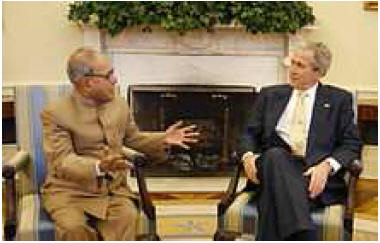
The then Finance Minister of India
Pranab Mukherjee
and the then US President
George W. Bush in 2008.
Role of the Prime Minister
Jawaharlal Nehru, India's first Prime Minister, promoted a strong
personal role for the Prime Minister but a weak institutional
structure. Nehru served concurrently as Prime Minister and Minister
of External Affairs; he made all major foreign policy decisions
himself after consulting with his advisers and then entrusted the
conduct of international affairs to senior members of the Indian
Foreign Service. He was the main founding fathers of the Panchsheel
or the five principles of peaceful co-existence.
His successors continued to exercise considerable control over
India's international dealings, although they generally appointed
separate ministers of external affairs.
India's second prime minister, Lal Bahadur Shastri (1964–66),
expanded the Prime Minister Office (sometimes called the Prime
Minister's Secretariat) and enlarged its powers. By the 1970s, the
Office of the Prime Minister had become the de facto coordinator and
supraministry of the Indian government. The enhanced role of the
office strengthened the prime minister's control over foreign policy
making at the expense of the Ministry of External Affairs. Advisers
in the office provided channels of information and policy
recommendations in addition to those offered by the Ministry of
External Affairs. A subordinate part of the office—the Research and
Analysis Wing (RAW)—functioned in ways that significantly expanded
the information available to the prime minister and his advisers.
The RAW gathered intelligence, provided intelligence analysis to the
Office of the Prime Minister, and conducted covert operations
abroad.
The prime minister's control and reliance on personal advisers in
the Office of the Prime Minister was particularly strong under the
tenures of Indira Gandhi (1966–77 and 1980–84) and her son, Rajiv
(1984–89), who succeeded her, and weaker during the periods of
coalition governments. Observers find it difficult to determine
whether the locus of decision-making authority on any particular
issue lies with the Ministry of External Affairs, the Council of
Ministers, the Office of the Prime Minister, or the prime minister
himself.
The Prime Minister is however free to appoint advisers and special
committees to examine various foreign policy options and areas of
interest. In a recent instance, Manmohan Singh appointed K.
Subrahmanyam in 2005 to head a special government task force to
study 'Global Strategic Developments' over the next decade. The Task
Force submitted its conclusions to the Prime Minister in 2006. The
report has not yet been released in the public domain.
Ministry of External Affairs
The Ministry of External Affairs is the Indian government's agency
responsible for the foreign relations of India. The Minister of
External Affairs holds cabinet rank as a member of the Council of
Ministers.
Salman Khurshid is current Minister of External Affairs. The
Ministry has two Ministers of State Preneet Kaur and E. Ahamed. The
Indian Foreign Secretary is the head of Indian Foreign Service (IFS)
and therefore, serves as the head of all Indian ambassadors and high
commissioners. Sujatha Singh is the current Foreign Secretary of
India.
Look East Policy
In the post Cold War era, a significant aspect of India's foreign
policy is the Look East Policy. During the cold war, India's
relations with its South East Asian neighbours was not very strong.
After the end of the cold war, the government of India particularly
realised the importance of redressing this imbalance in India's
foreign policy. Consequently, the Narsimha Rao government in the
early nineties of the last century unveiled the look east policy.
Initially it focused on renewing political and economic contacts
with the countries of East and South-East Asia.
At present, under the Look East Policy, the Government of India is
giving special emphasis on the economic development of backward
north eastern region of India taking advantage of huge market of
ASEAN as well as of the energy resources available in some of the
member countries of ASEAN like Burma. Look-east policy was launched
in 1992 just after the end of the cold war, following the
dissolution of the Soviet Union. After the start of liberalisation,
it was a very strategic policy decision taken by the government in
the foreign policy. To quote Prime Minister Manmohan Singh "it was
also a strategic shift in India's vision of the world and India's
place in the evolving global economy".
The policy was given an initial thrust with the then Prime Minister
Narasimha Rao visiting China, Japan, South Korea, Vietnam and
Singapore and India becoming an important dialogue partner with
ASEAN in 1992. Since the beginning of this century, India has given
a big push to this policy by becoming a summit level partner of
ASEAN (2002) and getting involved in some regional initiatives such
as the BIMSTEC and the Ganga–Mekong Cooperation and now becoming a
member of the East Asia Summit (EAS) in December, 2005.
Overview
India's relations with the world have evolved since the British Raj
(1857–1947), when the British Empire monopolised external and
defence relations. When India gained independence in 1947, few
Indians had experience in making or conducting foreign policy.
However, the country's oldest political party, the Indian National
Congress, had established a small foreign department in 1925 to make
overseas contacts and to publicise its freedom struggle. From the
late 1920s on, Jawaharlal Nehru, who had a long-standing interest in
world affairs among independence leaders, formulated the Congress
stance on international issues. As a member of the interim
government in 1946, Nehru articulated India's approach to the world.
India's international influence varied over the years after
independence. Indian prestige and moral authority were high in the
1950s and facilitated the acquisition of developmental assistance
from both East and West. Although the prestige stemmed from India's
nonaligned stance, the nation was unable to prevent Cold War
politics from becoming intertwined with interstate relations in
South Asia.
In the 1960s and 1970s India's international position among
developed and developing countries faded in the course of wars with
China and Pakistan, disputes with other countries in South Asia, and
India's attempt to balance Pakistan's support from the United States
and China by signing the Indo-Soviet Treaty of Friendship and
Cooperation in August 1971. Although India obtained substantial
Soviet military and economic aid, which helped to strengthen the
nation, India's influence was undercut regionally and
internationally by the perception that its friendship with the
Soviet Union prevented a more forthright condemnation of the Soviet
presence in Afghanistan. In the late 1980s, India improved relations
with the United States, other developed countries, and China while
continuing close ties with the Soviet Union. Relations with its
South Asian neighbours, especially Pakistan, Sri Lanka, and Nepal,
occupied much of the energies of the Ministry of External Affairs.
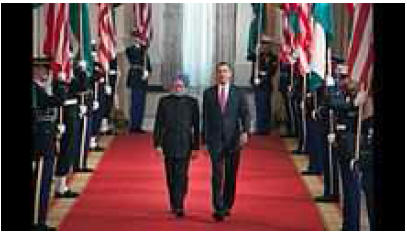
Since the dissolution of the Soviet Union, India has forged a closer
partnership
Western powers. Shown here are
Manmohan Singh with
Barack Obama
in 2009.
In the 1990s, India's economic problems and the demise of the
bipolar world political system forced India to reassess its foreign
policy and adjust its foreign relations. Previous policies proved
inadequate to cope with the serious domestic and international
problems facing India. The end of the Cold War gutted the core
meaning of nonalignment and left Indian foreign policy without
significant direction. The hard, pragmatic considerations of the
early 1990s were still viewed within the nonaligned framework of the
past, but the disintegration of the Soviet Union removed much of
India's international leverage, for which relations with Russia and
the other post-Soviet states could not compensate. After the
dissolution of the Soviet Union, India improved its relations with
the United States, Canada, France, Japan and Germany. In 1992, India
established formal diplomatic relations with Israel and this
relationship grew during the tenures of the Bharatiya Janata Party
(BJP) government and the subsequent UPA (United Progressive
Alliance) governments.
In the mid-1990s, India attracted the world attention towards the
Pakistan-backed terrorism in Kashmir. The Kargil War resulted in a
major diplomatic victory for India. The United States and European
Union recognised the fact that Pakistani military had illegally
infiltrated into Indian territory and pressured Pakistan to withdraw
from Kargil. Several anti-India militant groups based in Pakistan
were labeled as terrorist groups by the United States and European
Union.
In 1998, India tested nuclear weapons for the second time which
resulted in several US, Japanese and European sanctions on India.
India's then-defence minister, George Fernandes, said that India's
nuclear programme was necessary as it provided a deterrence to
potential Chinese nuclear threat. Most of the sanctions imposed on
India were removed by 2001.
After the 11 September attacks in 2001, Indian intelligence agencies
provided the U.S. with significant information on Al-Qaeda and
related groups' activities in Pakistan and Afghanistan. India's
extensive contribution to the War on Terror, coupled with a surge in
its economy, has helped India's diplomatic relations with several
countries. Over the past three years, India has held numerous joint
military exercises with U.S. and European nations that have resulted
in a strengthened U.S.-India and E.U.-India bilateral relationship.
India's bilateral trade with Europe and United States has more than
doubled in the last five years.
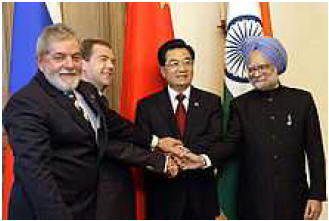
India has often represented the interests of developing countries at
various
international platforms. Shown here are Manmohan Singh with
Dmitry Medvedev,
Hu Jintao and
Luiz Inácio
Lula da Silva during
BRIC
summit in June, 2009.
India has been pushing for reforms in the UN and WTO with mixed
results. India's candidature for a permanent seat at the UN Security
Council is currently backed by several countries including France,
Russia, the United Kingdom, Germany, Japan, Brazil, Australia and
UAE. In 2004, the United States signed a nuclear co-operation
agreement with India even though the latter is not a part of the
Nuclear Non-Proliferation Treaty. The US argued that India's strong
nuclear non-proliferation record made it an exception, however this
has not persuaded other Nuclear Suppliers Group members to sign
similar deals with India. During a state visit to India in November
2010, US president Barack Obama announced US support for India's bid
for permanent membership to UN Security Council as well as India's
entry to Nuclear Suppliers Group, Wassenaar Arrangement, Australia
Group and Missile Technology Control Regime.
Strategic partners
India's growing economy, strategic location, friendly foreign policy
and large and vibrant diaspora has won it more allies than enemies.
India has friendly relations with several countries in the
developing world. Though India is not a part of any major military
alliance, it has close strategic and military relationship with most
of the fellow major powers.
Countries considered India's closest include the Russian Federation,
Israel, Afghanistan, France, Bhutan and Bangladesh. Russia is the
largest supplier of military equipment to India, followed by Israel
and France. According to some analysts, Israel is set to overtake
Russia as India's largest military and strategic partner. The two
countries also collaborate extensively in the sphere of
counter-terrorism and space technology. India also enjoys strong
military relations with several other countries, including the
United Kingdom, the United States, Japan, Singapore, Brazil, South
Africa and Italy. In addition, India operates an airbase in
Tajikistan and signed a landmark defence accord with Qatar in 2008.
India has also forged relationships with developing countries,
especially South Africa, Brazil, and Mexico. These countries often
represent the interests of the developing countries through economic
forums such as the G8+5, IBSA and WTO. India was seen as one of the
standard bearers of the developing world and claimed to speak for a
collection of more than 30 other developing nations at the Doha
Development Round. India's "Look East" Policy has helped it develop
greater economic and strategic partnership with Southeast Asian
countries, South Korea, Japan, and Taiwan. India also enjoys
friendly relations with the Persian Gulf countries and most members
of the African Union.













